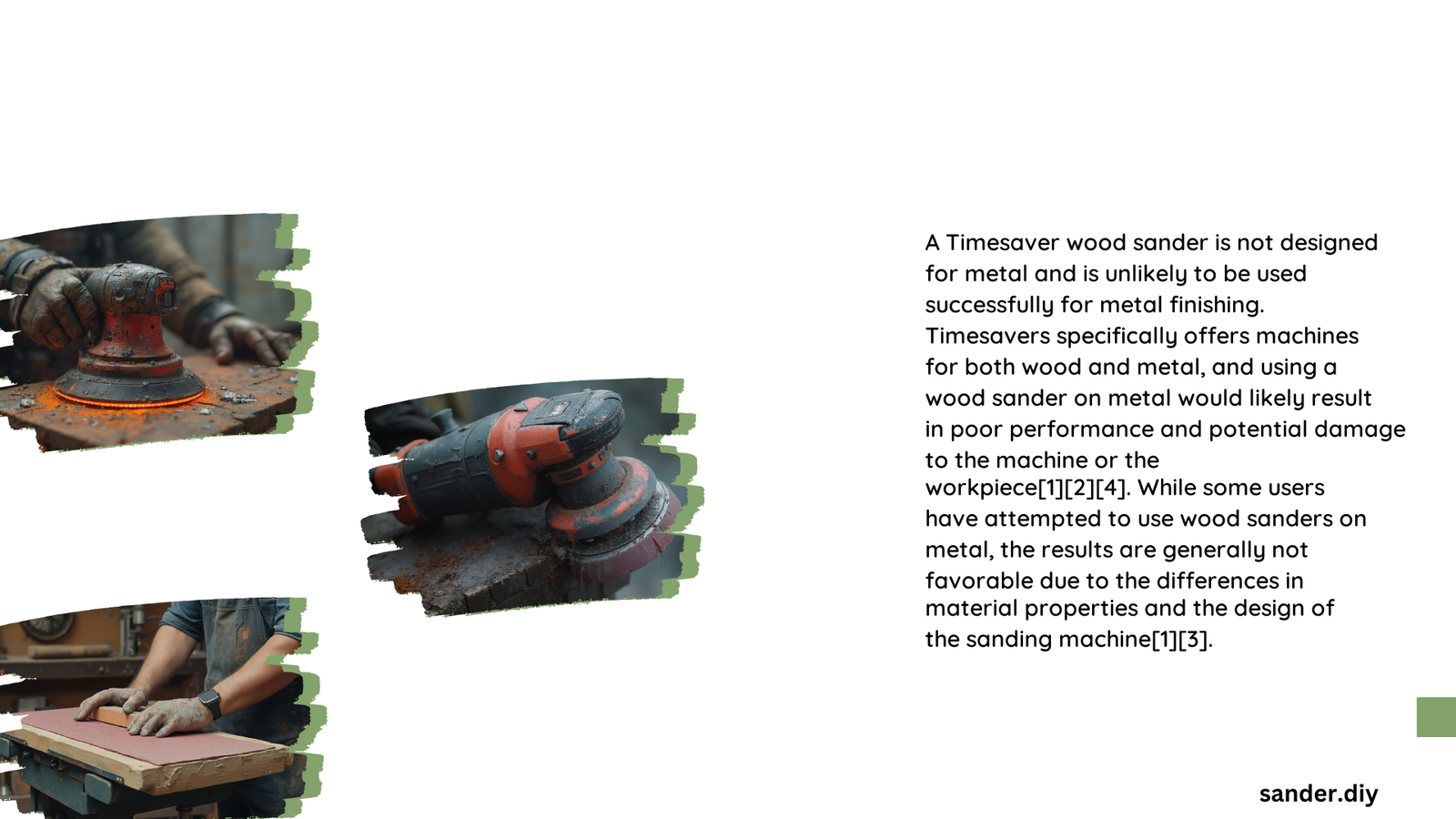Timesaver wood sanders can potentially be used for metal surfaces, but this requires careful evaluation of machine specifications, abrasive types, and specific model capabilities. Not all wood sanders are universally adaptable to metal, and users must consider factors like power output, belt compatibility, and potential modifications to ensure effective and safe metal surface finishing.
Can You Adapt a Wood Sander for Metal Surfaces?
What Makes a Timesaver Sander Compatible with Metal?
Timesaver sanders are primarily designed for woodworking, but certain models offer versatility for metal applications. Key compatibility factors include:
- Machine Construction: Heavy-duty models with robust components
- Power Output: High-performance machines with consistent torque
- Adjustable Settings: Flexibility in speed and pressure control
What Specific Timesaver Models Work for Metal?
| Model Series | Metal Compatibility | Key Features |
|---|---|---|
| 5300 Series | High | Non-wood material processing |
| 137-1HD | Moderate | Requires specific tooling |
| Professional Line | Variable | Depends on configuration |
How Do Abrasive Types Impact Metal Sanding?
Different abrasive materials significantly influence metal sanding performance:
- Aluminum Oxide
- Standard for general metal applications
- Highly friable cutting surface
-
Consistent performance across various metal types
-
Silicon Carbide
- Ideal for finish work
- Reduces heat generation
-
Provides even cutting action
-
Ceramic Abrasives
- Aggressive metal removal
- Extended lifespan
- Suitable for intensive metal processing
What Techniques Ensure Successful Metal Finishing?
Effective metal sanding requires precision and controlled techniques:
- Consistent Pressure: Maintain uniform application
- Temperature Management: Prevent material overheating
- Proper Grit Selection: Match abrasive to specific metal surface
What Are the Potential Challenges?
Metal sanding with a wood sander presents several challenges:
- Potential equipment strain
- Risk of surface damage
- Higher wear on machine components
- Need for specialized abrasive configurations
How to Optimize Metal Sanding Performance?
Recommendations for successful metal surface finishing:
- Verify machine specifications
- Use appropriate abrasive belts
- Monitor sanding temperature
- Implement gradual pressure techniques
- Regular equipment maintenance
Cost and Accessibility Considerations
- Abrasive Costs
- Ceramic: Higher initial investment
- Aluminum Oxide: More economical
-
Replacement frequency varies by application
-
Availability
- Specialized abrasives from manufacturers like 3M
- Custom ordering options
- Professional supplier networks
Conclusion

While Timesaver wood sanders can be adapted for metal surfaces, success depends on careful selection, proper modifications, and understanding specific machine capabilities. Professional consultation and thorough equipment assessment are recommended before attempting metal sanding.
